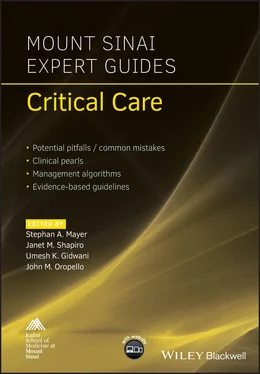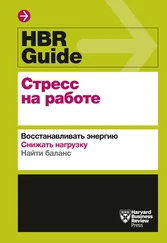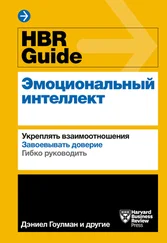Mount Sinai Expert Guides
Здесь есть возможность читать онлайн «Mount Sinai Expert Guides» — ознакомительный отрывок электронной книги совершенно бесплатно, а после прочтения отрывка купить полную версию. В некоторых случаях можно слушать аудио, скачать через торрент в формате fb2 и присутствует краткое содержание. Жанр: unrecognised, на английском языке. Описание произведения, (предисловие) а так же отзывы посетителей доступны на портале библиотеки ЛибКат.
- Название:Mount Sinai Expert Guides
- Автор:
- Жанр:
- Год:неизвестен
- ISBN:нет данных
- Рейтинг книги:4 / 5. Голосов: 1
-
Избранное:Добавить в избранное
- Отзывы:
-
Ваша оценка:
- 80
- 1
- 2
- 3
- 4
- 5
Mount Sinai Expert Guides: краткое содержание, описание и аннотация
Предлагаем к чтению аннотацию, описание, краткое содержание или предисловие (зависит от того, что написал сам автор книги «Mount Sinai Expert Guides»). Если вы не нашли необходимую информацию о книге — напишите в комментариях, мы постараемся отыскать её.
Mount Sinai Expert Guides — читать онлайн ознакомительный отрывок
Ниже представлен текст книги, разбитый по страницам. Система сохранения места последней прочитанной страницы, позволяет с удобством читать онлайн бесплатно книгу «Mount Sinai Expert Guides», без необходимости каждый раз заново искать на чём Вы остановились. Поставьте закладку, и сможете в любой момент перейти на страницу, на которой закончили чтение.
Интервал:
Закладка:
14 PART 6: Infectious Diseases CHAPTER 42: The Febrile Patient Background Prevention Diagnosis Treatment Reading list Suggested websites Guidelines CHAPTER 43: Sepsis Background Prevention Diagnosis Treatment Special populations Prognosis Reading list Suggested websites Guidelines Evidence CHAPTER 44: Infections Acquired in the Intensive Care Unit General treatment rationale General prevention Central line‐associated bloodstream infections Catheter‐associated urinary tract infections Ventilator‐associated event and ventilator‐associated pneumonia Clostridium difficile infection Pressure ulcer infection Reading list Suggested websites Guidelines CHAPTER 45: Antimicrobial Therapy Background Clinical pharmacology principles Specific treatments Treatment of resistant organisms Antimicrobial stewardship programs (ASP) Antifungal and antiviral therapy (Tables 45.1–45.4) Reading list Guidelines CHAPTER 46: Pneumonia Background Prevention Diagnosis Differential diagnosis Treatment Special populations Prognosis Reading list Suggested websites Guidelines Evidence Images CHAPTER 47: Central Nervous System Infections Background Prevention Diagnosis Treatment Special populations Prognosis Reading list Guidelines Evidence Images CHAPTER 48: Acquired Immune Deficiency Syndrome Background Prevention Diagnosis Treatment Immune reconstitution inflammatory syndrome in HIV Prognosis of HIV in the ICU Reading list Suggested websites Guidelines Evidence Images
15 PART 7: Renal Disorders CHAPTER 49: Fluid Resuscitation Background Factors affecting fluid balance Distribution of body fluid Assessment of fluid status Management Complications of fluid therapy Reading list Images CHAPTER 50: Acute Kidney Injury Background Prevention Diagnosis Treatment Special populations Prognosis Reading list Suggested websites Guidelines CHAPTER 51: Dialysis Background Procedure Complications of RRT Prognois Reading list Suggested websites Image CHAPTER 52: Electrolyte Disorders Hyperkalemia Hypokalemia Reading list CHAPTER 53: Acid–Base Disorders Background Diagnosis Treatment Prognosis Reading list
16 PART 8: Hematology and Oncology CHAPTER 54: Blood Products and Transfusions Blood products Treatment protocols Adverse transfusion reactions Reading list CHAPTER 55: Anticoagulation‐Related Bleeding Background Prevention Diagnosis Treatment Prognosis Reading list Guidelines CHAPTER 56: Coagulopathy and Thrombocytopenia Background Prevention Diagnosis Treatment Special populations Prognosis Reading list Guidelines CHAPTER 57: Venous Thromboembolism and Pulmonary Embolism Background Prevention Diagnosis Treatment Special populations Prognosis Reading list Guidelines Images CHAPTER 58: Oncologic Emergencies Background Prevention Diagnosis Treatment Prognosis Reading list Guidelines
17 Index
18 End User License Agreement
List of Tables
1 Chapter 1 Table 1.1 Predictors of difficulties with mask ventilation and/or intubation.
2 Chapter 2 Table 2.1 Richmond Agitation‐Sedation Scale. Table 2.2 Riker Sedation‐Agitation Scale.
3 Chapter 4 Table 4.1 Features of ultrasound physics. Table 4.2 Probe types. Table 4.3 Intravascular volume estimation . Table 4.4 Features of cardiogenic pulmonary edema and non‐cardiogenic lung injury... Table 4.5 RUSH exam protocol.
4 Chapter 6 Table 6.1 Risks and benefits of tracheostomy.
5 Chapter 7 Table 7.1 Determining patients’ ideal body weight (IBW). * Table 7.2 Determining protein requirements (g/day). Table 7.3 Determining caloric and macronutrient requirements (g/day): carbohydrat... Table 7.4 Determining caloric and macronutrient requirements (g/day): lipids and ...
6 Chapter 9 Table 9.1 MACOCHA score calculation worksheet.
7 Chapter 11 Table 11.1 Waveform components. Table 11.2 Echocardiography views.
8 Chapter 12 Table 12.1 Different forms of shock states. Table 12.2 Action of vasoactive medications.
9 Chapter 17Table 17.1 Vasoactive medications.
10 Chapter 19Table 19.1 PEA evaluation.Table 19.2 Inclusion and exclusion criteria for TTM therapy after cardiac arre...
11 Chapter 20Table 20.1 Potential causes of false high and low values in pulse oximetry.Table 20.2 Interpretation of capnographs.
12 Chapter 21Table 21.1 Features of hypoxemic and hypercapnic respiratory failure.Table 21.2 Common ventilator modes.
13 Chapter 22Table 22.1 Indications and contraindications for NPPV.Table 22.2 Indications and contraindications for HFNC.
14 Chapter 23Table 23.1 Etiologies of ARDS.Table 23.2 Risk factors for ARDS.
15 Chapter 24Table 24.1 Additional risk factors for asthma and COPD‐related deaths.Table 24.2 Frequently used medications in acute severe asthma and severe AECOPD....
16 Chapter 25Table 25.1 Criteria for a successful SBT. *
17 Chapter 26Table 26.1 Screening tools for delirium .
18 Chapter 27Table 27.1 Classification of hemorrhagic infarction.
19 Chapter 32Table 32.1 Presentation of common toxidromes.
20 Chapter 38Table 38.1 Burn classification.
21 Chapter 40Table 40.1 Liver transplant procedure.Table 40.2 Advantages and disadvantages of the different types of pancreas transp...Table 40.3 Exocrine drainage.Table 40.4 Venous drainage.Table 40.5 Intestinal transplant procedures.
22 Chapter 41Table 41.1 Physiologic changes in pregnancy.
23 Chapter 42Table 42.1 Differential diagnosis based on the severity of fever.Table 42.2 Differential diagnosis based on type of leukocytosis.Table 42.3 Febrile and afebrile tranfusion reactions.
24 Chapter 43Table 43.1 Definitions of sepsis.Table 43.2 Source‐specific symptoms and signs of sepsis.Table 43.3 SOFA scoring system.
25 Chapter 44Table 44.1 Initial empiric antibiotic therapy for suspected VAP in patients with ...Table 44.2 Initial empiric antibiotic therapy for suspected VAP in patients with ...
26 Chapter 45Table 45.1 Guide to empiric antimicrobial therapy in the critical care unit.Table 45.2 Pharmacotherapy for common antibiotics in critical care. Table 45.3 Pharmacotherapy of most common antifungals for critical care.Table 45.4 Pharmacotherapy of most common antivirals for critical care.
27 Chapter 47Table 47.1 CSF findings in various forms of CNS infection.Table 47.2 Antibiotic regimens for meningitis.Table 47.3 Antimicrobials for brain abscess.
28 Chapter 48Table 48.1 CD4 cell count categories.Table 48.2 Medications with significant interactions with antiretroviral medicati...
29 Chapter 49Table 49.1 Composition of crystalloid fluids.
30 Chapter 50Table 50.1 AKIN and RIFLE criteria for acute kidney injury.
31 Chapter 51Table 51.1 Guidelines in the USA and UK on when to initiate RRT in the ICU.Table 51.2 Differences between intermittent and continuous renal replacement ther...Table 51.3 Causes and treatment of complications of RRT.
32 Chapter 53Table 53.1 Relationship between pH and [H +] ion concentration.Table 53.2 Expected compensation for acid–base disorders.Table 53.3 Treatments for acid–base disorders.
33 Chapter 55Table 55.1 Rates of major hemorrhage on vitamin K antagonists or heparin (per yea...Table 55.2 Recommendations for managing elevated INRs or bleeding in patients rec...
34 Chapter 56Table 56.1 Pathogenesis of common causes of acquired coagulopathies in critically...Table 56.2 Pathogenesis of common causes of thrombocytopenia in critically ill pa...Table 56.3 Minimum platelet counts for common interventions in the ICU.
35 Chapter 57Table 57.1 ICU‐VTE scoring system for risk of developing DVT and/or PE.
36 Chapter 58Table 58.1 The MASCC risk index score.Table 58.2 Cairo–Bishop clinical TLS definition and grading.Table 58.3 Probability of SL deduced from severity of symptoms.Table 58.4 Grading system for SVCS.
List of Illustrations
1 Chapter 1 Figure 1.1 Mallampati classification.
Читать дальшеИнтервал:
Закладка:
Похожие книги на «Mount Sinai Expert Guides»
Представляем Вашему вниманию похожие книги на «Mount Sinai Expert Guides» списком для выбора. Мы отобрали схожую по названию и смыслу литературу в надежде предоставить читателям больше вариантов отыскать новые, интересные, ещё непрочитанные произведения.
Обсуждение, отзывы о книге «Mount Sinai Expert Guides» и просто собственные мнения читателей. Оставьте ваши комментарии, напишите, что Вы думаете о произведении, его смысле или главных героях. Укажите что конкретно понравилось, а что нет, и почему Вы так считаете.











